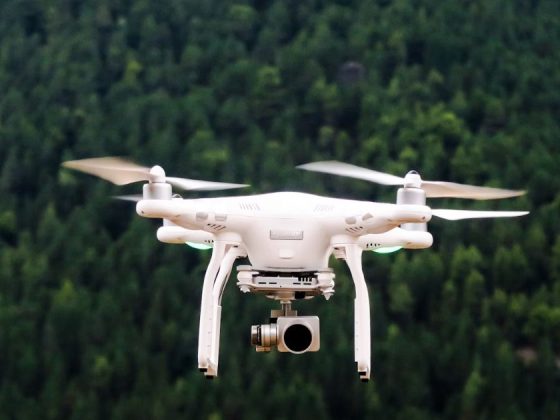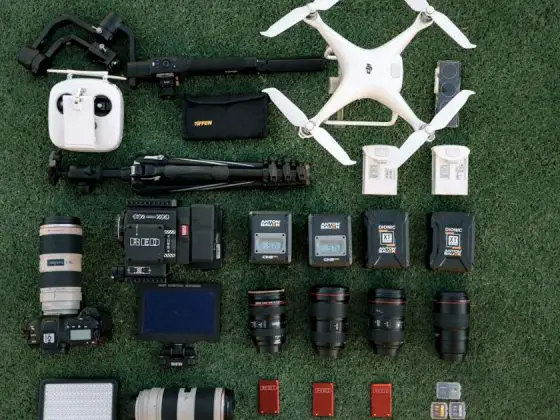Virtual Reality (VR) has rapidly transitioned from a niche innovation to a mainstream sensation, delivering immersive experiences that surpass conventional entertainment. From gaming and education to healthcare and virtual tourism, VR continues to expand the possibilities, enabling lifelike engagement with entirely new environments. This article highlights today’s best VR headsets, examines the growing impact of VR across key industries, and looks ahead to the future of virtual experiences.
The Best VR Headsets of 2025
As virtual Reality (VR) continues to grow, more companies are launching advanced headsets, each offering unique features and capabilities. Here’s a look at some of the best VR headsets you can get your hands on right now:
1. Meta Quest 3
Meta’s Quest series has long been one of the most popular and accessible VR options on the market, and the Quest 3 takes that to new heights. The Quest 3 offers mixed Reality (MR) experiences, allowing users to blend the real world with the virtual one through the use of advanced sensors and cameras. Whether you’re playing immersive VR games or exploring virtual environments, the Meta Quest 3 offers an unparalleled experience at a reasonable price point.
2. Valve Index
If you’re seeking the ultimate VR experience with top-tier performance and quality, the Valve Index is a top choice. Known for its high refresh rate (up to 144Hz), ultra-wide field of view, and precise tracking, the Index is perfect for gamers who demand the best visual and motion tracking quality. The external sensors provide accurate positional monitoring, making it ideal for room-scale VR experiences. Although it requires a compatible PC to run, the Valve Index is worth the investment for those serious about their VR experiences.
3. PlayStation VR2
A cutting-edge virtual reality headset meticulously designed to enhance the PS5 experience, delivering unmatched immersion and performance. With enhanced graphics, improved comfort, and innovative new features like haptic feedback and adaptive triggers, it represents a significant leap forward from its predecessor. The PS VR2 seamlessly integrates with the PlayStation 5, offering immersive experiences in AAA games, as well as new VR-specific titles. If you’re already a PlayStation fan, this headset provides a truly unique VR experience specifically designed for console gaming.
4. HP Reverb G2
Designed for both gaming and professional use, the HP Reverb G2 boasts a 2160×2160 resolution per eye, making it one of the sharpest VR headsets available. Its high resolution makes it perfect for detailed tasks like architectural visualisation or 3d design, where clarity is paramount. With its comfortable ergonomics and intuitive setup, it’s an excellent choice for those seeking an immersive VR gaming or training simulation experience. This headset also features spatial audio, adding another layer of realism to the virtual world.
5. Pico 4
A standalone VR headset designed to rival the Meta Quest 3, combining affordability with ease of use. It features pancake lenses, dual-LCD panels with a resolution of 2160 x 2160 pixels per eye, and a 104° horizontal field of view. With its sleek, lightweight design and high-quality display, it offers an excellent balance between performance and portability. The Pico 4 is equipped with powerful features, including 4K resolution, 120Hz refresh rate, and inside-out tracking. It’s a great option for those looking for a high-quality VR experience without the need for external equipment.
How VR is Changing Various Industries
While gaming is perhaps the most well-known use case for VR, the technology is rapidly being adopted by a wide range of industries. Let’s explore some of the exciting ways VR is changing our world:
1. Gaming
VR gaming is where it all began, and it’s still the most popular application of the technology. With immersive visuals, interactive gameplay, and 360-degree environments, VR gaming provides an experience that traditional gaming can’t match. From first-person shooters to adventure games and virtual reality arcades, VR offers an unparalleled level of interactivity and immersion.
2. Education
VirtuaRealityty is revolutionising educational methods by introducing immersive environments that elevate engagement and interactivity. Complex subjects become more accessible as learners explore content beyond the limitations of textbooks and lectures, turning education into a dynamic, experience-driven process.
In fields like medicine, VR provides a safe platform for practising intricate procedures such as surgeries, allowing for skill development without real-world risk. These hands-on simulations not only boost competence and confidence but also improve knowledge retention and promote a deeper, more intuitive understanding of the subject matter.
3. Healthcare
In healthcare, VR is being used for a variety of applications, from mental health therapy to surgical training. For instance, VR simulations allow doctors to refine their skills by practising procedures in a risk-free, controlled environment. In mental health, VR has been used for exposure therapy to treat conditions like PTSD, anxiety, and phobias by immersing patients in controlled, virtual environments. This method has shown promising results in reducing symptoms and improving patient outcomes.
4. Virtual Tourism
Virtual tourism has taken off, particularly during the pandemic when travel restrictions kept people from exploring the world. With VR headsets, users can take guided tours of famous landmarks, walk through museums, or visit remote natural wonders, all from the comfort of their own homes. This offers new opportunities for people who might not have the resources to travel or those who want to preview a destination before booking a trip.
5. Workplace and Training
VR is also making waves in the workplace, offering employees a safe space to practice skills, troubleshoot problems, and conduct simulations. Industries such as aviation, manufacturing, and military training have adopted virtual reality (VR) to create realistic environments for training personnel. It’s an effective tool for improving skills without the risks associated with real-life scenarios.
Exploring New Realms: The Future of Virtual Reality
1. Augmented Reality and VR Convergence
A breakthrough on the horizon is the convergence of augmented Reality (AR) with virtual Reality (VR). AR enhances the physical world by overlaying digital elements, and it’s increasingly being integrated into modern VR systems. Devices like the Meta Quest 3 already feature mixed reality (MR) capabilities, allowing interaction with virtual objects while maintaining awareness of the surrounding environment.
As AR technology advances, this fusion is set to make VR more fluid and immersive, enabling seamless transitions between the real and virtual worlds. The result? A new era of possibilities across gaming, entertainment, remote work, and social connectivity—where digital and physical experiences are no longer separate, but intertwined.
2. Social VR
With the rapid growth of VR technology, virtual social spaces are becoming increasingly immersive and lifelike. Platforms such as VRChat and Rec Room are already pioneering digital communities where avatars mirror real-world gestures and expressions, fostering more authentic interactions.
As these environments continue to evolve, social connections in virtual reality are expected to feel more natural and engaging than those on traditional social media. From casual hangouts and live events to collaborative work sessions, the way people connect, communicate, and build relationships is undergoing a transformative shift.
3. VR for Mental Wellness
The possibilities for using VR in mental health care are poised to expand significantly. We’ve already seen VR being used in exposure therapy for conditions like anxiety, PTSD, and phobias. As VR continues to improve, it could become a more widely used tool for therapeutic practices, offering personalised environments where users can confront their fears, relax, or focus on mindfulness exercises.
For example, VR can be used in meditation sessions, helping users immerse themselves in calming virtual environments, such as tranquil beaches or peaceful forests. Similarly, VR experiences could be designed to promote stress reduction, assist in cognitive-behavioural therapy, or even support mindfulness practices through real-time biofeedback.
4. Hyper-Reality
The concept of “hyper-reality” is paving the way for a transformative era in immersive technology. By seamlessly blending physical and virtual environments, hyper-reality creates experiences that feel more real than reality itself. This vision imagines a future where virtual experiences are so advanced that they become nearly indistinguishable from real life. Powered by innovations like haptic feedback, brain-computer interfaces, and ultra-high-resolution displays, hyper-reality could offer environments with astonishing levels of sensory detail.
From the rustle of leaves to the texture of cobblestones underfoot, these virtual worlds may eventually mirror reality with uncanny precision. A stroll through a digitally rendered New York City, complete with ambient city sounds and tactile sensations, might one day feel as vivid and tangible as the real thing.
5. Educational and Professional Training in VR
As VR technology continues to evolve, its impact on education and professional training is expanding at an unprecedented pace. Industries such as medicine, aviation, and engineering are already leveraging virtual Reality (VR) to develop highly realistic simulations that offer hands-on, immersive learning experiences. These environments enable users to build practical skills in a safe and controlled setting, thereby bridging the gap between theory and real-world application.
Looking ahead, even more sectors are expected to adopt VR for workforce development. From complex machinery operation to emergency response training, VR enables employees to practice high-stakes tasks without the associated risks, ushering in a new era of smarter, safer, and more effective training solutions.
For instance, healthcare professionals could use VR to simulate surgeries or practice complex medical procedures. Students studying history could walk through ancient ruins, interacting with their surroundings as if they were there. VR could even be used in business to simulate various market scenarios, enabling leaders and teams to make better-informed decisions in real-time.
A New Era of Entertainment
As VR technology gains momentum, it is reshaping the entertainment landscape. No longer limited to passive viewing or traditional gaming, VR introduces an immersive dimension that transforms media consumption into fully interactive experiences. Virtual reality cinema immerses viewers inside the narrative, enabling the exploration of environments and interaction with characters in a way that traditional formats cannot replicate.
The emergence of VR films and interactive storytelling is already changing how stories are told. Creators are exploring dynamic narratives that enable the audience to shape the storyline through their choices, thereby influencing the plot’s progression. This shift marks a bold new chapter in entertainment—one where immersion and agency are at the forefront of the viewer experience.
In gaming, VR is revolutionising the experience, elevating it to unprecedented levels of immersion and interactivity. The ability to physically interact with the environment, manipulate objects, and explore vast worlds in full 360-degree views has made VR gaming the go-to choice for many players. Virtual reality platforms like Oculus, PlayStation VR, and Steam VR are constantly expanding their game libraries, offering something for everyone—from action-packed adventures to puzzle-solving mysteries and even virtual reality fitness experiences.
The Transformative Power of Virtual Reality
VirtuaRealityty is advancing swiftly, showcasing a future where digital and physical worlds integrate harmoniously. From immersive gaming environments and experiential learning to lifelike virtual collaboration, VR is redefining the ways people live, learn, work, and connect in an increasingly blended world.
As the technology matures, we can expect even more mind-blowing innovations that will make VR experiences even more immersive, realistic, and accessible. For those ready to embrace the future, the new realm of VR offers an exciting horizon to explore—one that promises to change the way we interact with the world around us. So, are you ready to step into the future? The world of Virtual Reality is waiting.





